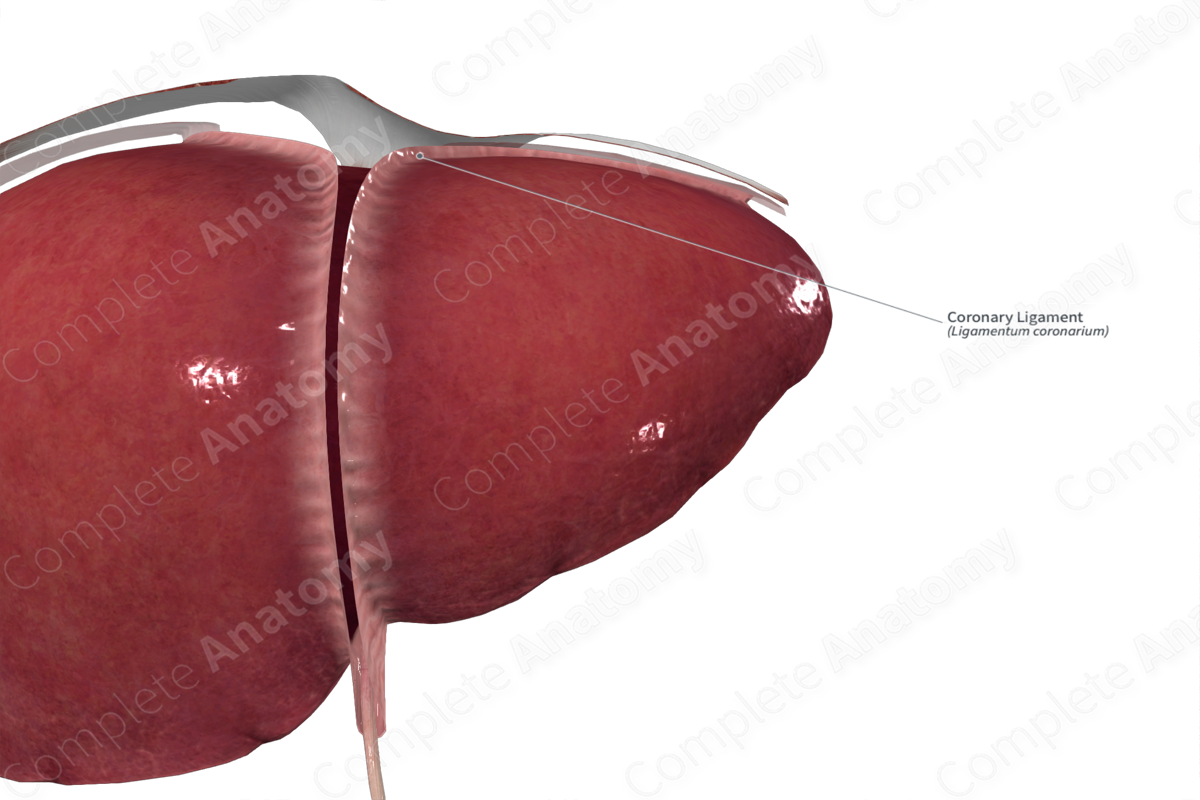
Structure/Morphology
The coronary ligament of liver is a reflected portion of peritoneum. It attaches the superior and posterior portions of the liver’s right lobe to the concave inferior portion of the diaphragm.
The two layers of the coronary ligament merge on the liver to form the right triangular ligament. Between the two portions of the coronary ligament on the right lobe of the liver lies the bare area.
Key Features/Anatomical Relations
The lower extent of the coronary ligament reflects over the right kidney and suprarenal gland (Standring, 2016).
Function
The coronary ligament of the liver serves as a supportive ligament that helps anchor the liver to the respiratory diaphragm.
List of Clinical Correlates
- Liver transplant
References
Standring, S. (2016) Gray's Anatomy: The Anatomical Basis of Clinical Practice. Gray's Anatomy Series 41 edn.: Elsevier Limited.
Learn more about this topic from other Elsevier products
Joint Ligament

Entheseal structures are widely located throughout the body and are represented by the interface between bone and several tissues including tendon, joint capsules and ligaments.




